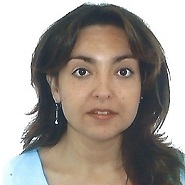Current Trends in Biomaterial Scaffolds
A special issue of Applied Sciences (ISSN 2076-3417). This special issue belongs to the section "Applied Biosciences and Bioengineering".
Deadline for manuscript submissions: closed (30 November 2020) | Viewed by 14143
Special Issue Editors
Interests: designing and developing new polycrystalline biomaterials (dense and porous) with controlled microstructures; making use of appropriated phase equilibrium diagrams and to study, not only their physical properties, but also their behavior in vitro (stem cells) and in vivo (bioactivity in rats and rabbits); the tissue engineering field study of the tissue–ceramic implant interfaces is of particular interest
Special Issues, Collections and Topics in MDPI journals
Interests: biochemistry; genetics and molecular biology; biomechanical and histological analyses; biomaterials design and characterization; in vitro and in vivo studies
Special Issue Information
Dear Colleagues,
In recent years, bone tissue has become the focus of intense research, due to increased life expectancy, causing age-related diseases such as osteoporosis, and also to find the best treatment for injuries and traumas. Although the best bone substitute is bone itself, either by using autografts or allografts, these options have their drawbacks, such as poor availability and health risks that can be incurred. Hence, considerable interest has been expressed in synthetic bone replacement materials which, in certain cases, have proven to be superior to autografts.
The properties of biomaterials and scaffolds, such as pore structures, mechanical properties and degradation, play an essential role in their successful implementation for tissue repair or regeneration. The surface characteristics of biomaterials, e.g., their topography, chemistry or surface energy, also play an essential part in cell–material interaction and implant integration.
It is, therefore, my immense pleasure to invite you to submit a manuscript for the Special Issue, “Current Trends in Biomaterial Scaffolds” covering any aspect of the design, processing, or characterization of scaffolds, including in vitro and in vivo studies.
Prof. Dr. Piedad N. De Aza
Dr. Patricia Mazón
Guest Editors
Manuscript Submission Information
Manuscripts should be submitted online at www.mdpi.com by registering and logging in to this website. Once you are registered, click here to go to the submission form. Manuscripts can be submitted until the deadline. All submissions that pass pre-check are peer-reviewed. Accepted papers will be published continuously in the journal (as soon as accepted) and will be listed together on the special issue website. Research articles, review articles as well as short communications are invited. For planned papers, a title and short abstract (about 100 words) can be sent to the Editorial Office for announcement on this website.
Submitted manuscripts should not have been published previously, nor be under consideration for publication elsewhere (except conference proceedings papers). All manuscripts are thoroughly refereed through a single-blind peer-review process. A guide for authors and other relevant information for submission of manuscripts is available on the Instructions for Authors page. Applied Sciences is an international peer-reviewed open access semimonthly journal published by MDPI.
Please visit the Instructions for Authors page before submitting a manuscript. The Article Processing Charge (APC) for publication in this open access journal is 2400 CHF (Swiss Francs). Submitted papers should be well formatted and use good English. Authors may use MDPI's English editing service prior to publication or during author revisions.
Keywords
- Design
- Processing
- Characterization
- Tissue Engineering
- Drug delivery
- Bioactivity
- Scaffolds
- Ion release
- Bioactive bone graft materials
- Cell–material interactions
- Bone tissue–material interaction






